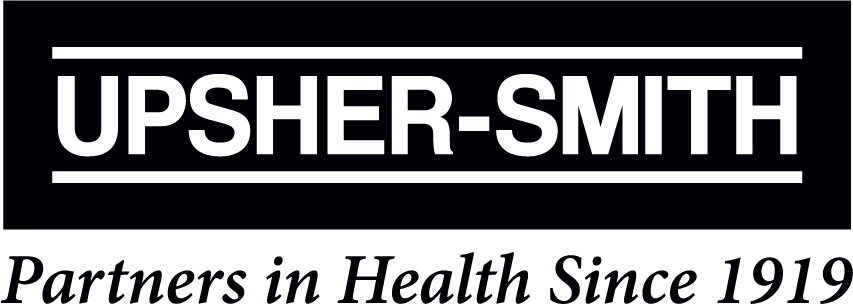Ink, Paper & Imagination. Daily.
Daily Printing is a leader in the print industry, providing quality printing and marketing services to major corporations, small companies and individuals. Daily has the latest technology, equipment and know-how to satisfy your printing and marketing needs. As an employee owned company, each employee owner of Daily is committed to our clients success.
What We Offer
Mailing Services
Our full-service mail house is capable of handling all of your mailing and marketing needs, domestic or foreign.
- Mailing Lists and USPS List Certification- Postage Optimization & CO-Pal Mailing
- Smart Inserting with 1-to-1 Data match
Marketing & Graphic Design
- Omni-Channel Marketing
Digital Printing
Offset Printing
Bindery & Post-Press
Warehouse & Fulfillment
MailBoostXT
MailBoostXT is a marketing-based solution that is designed to seamlessly track the effectiveness of your direct mail campaign while enhancing results through the integration of digital platforms like Google, Facebook, Instagram and Informed Delivery.
- Get your direct mail an additional 6-8 (8-16 touches) client touches through the integration of digital marketing- 23-46% higher response over direct mail alone. A game-changer in marketing
- We can also tell you WHO is going to your website without them having to take any action
Our Technologies are Timed, Sealed & Delivered to Drive Exposure
Discover how we can help you reach more leads.
Total Jobs Last Year
Pieces Mailed Annually
Net Promoter Score
99.2% On-Time Delivery
Digitally Printed Pieces Annually
Frequently Asked
Questions
-
What is Postal Optimization?
It’s a common misconception that “postage is postage” according to the USPS current postage stamp rates. Postal optimizations are used to reduce costs for a business. Postage optimization includes address management, envelope optimizations, presort & commingling discounts, and intelligent mail (IMb barcodes). In an increasingly digital world, the print and mail industry is all about finding efficiency, this includes efficient mailing processes. Instead of cutting back on mail volume after another USPS rate increase, use optimized mailing practices and leverage a variety of USPS discounts to get the lowest postage rates possible so that you can to continue sending mail without having to compromise on volume.
-
What is the difference between RGB and CMYK color? Is it important?
RGB stands for Red, Green, and Blue. This scale is most commonly used in monitors, televisions, scanners, and digital cameras. CMYK is cyan, magenta, yellow, and black – “full-color printing”.
When you combine all RGB light it creates white, whereas CMYK creates black. Subsequently, it is impossible for a printer to exactly reproduce a color that we see on our monitors. If possible, we recommend converting images or graphics in RGB to CMYK yourself, so you can adjust any changes before files are given to the printing company.
Why do colors differ when using offset printing versus digital printing?
Because the ink and toner mediums are different, the printed piece may have a slightly different result. Even though both types of printing use CMYK, the rasterization processes are different, which cause variations in color. In addition, if the file contains RGB elements, the different methods will produce varying results.
-
What is Bleed and what is the recommended amount of Bleed for print jobs?
Bleed is when the print area goes beyond the final trim line of the page, thus allowing the final print to “bleed” off the edge of the page.
Recommended bleed is 1/8 inch (.125) on all sides of the page or sheet.
-
At what resolution should I save my photos and graphics?
Resolution should be set to 300 dpi.
Pictures and graphics pulled from the internet are often low resolution, typically 72 dpi or 96 dpi. Avoid these graphics, as they will appear pixilated and blocky when printed.
Also note that you should save all photos in CMYK mode, not RGB mode when possible. Images saved in RGB mode may not print properly. If you are unable to save your image in CYMK mode, please let us know.
-
Why do the printed colors look different from the colors on my screen?
In short, printers and monitors produce colors in different ways.
Monitors use the RGB (red, green, blue) color model, which usually supports a wider spectrum of colors. Printers use the CMYK (cyan, magenta, yellow, black) color model, which can reproduce most—but not all—of the colors in the RGB color model. Depending on the equipment used, CMYK generally matches 85–90% of the colors in the RGB model.
When a color is selected from the RGB model that is out of the range of the CMYK model, the application chooses what it thinks is the closest color that will match. Programs like Adobe Photoshop will allow you to choose which color will be replaced. Others may not.
-
What type of return can I expect from personalized or variable data marketing materials?
Studies consistently show that personalized marketing receives a far greater response than static pieces.
On average, the response rate of a static direct mail campaign is around 2%. A targeted, personalized campaign that utilizes variable data technology can increase that response rate by up to 30%.
While the cost per piece of variable imaging direct mail is higher, your cost per response is much lower, increasing your return on investment.
What is Postal Optimization?
It’s a common misconception that “postage is postage” according to the USPS current postage stamp rates. Postal optimizations are used to reduce costs for a business. Postage optimization includes address management, envelope optimizations, presort & commingling discounts, and intelligent mail (IMb barcodes). In an increasingly digital world, the print and mail industry is all about finding efficiency, this includes efficient mailing processes. Instead of cutting back on mail volume after another USPS rate increase, use optimized mailing practices and leverage a variety of USPS discounts to get the lowest postage rates possible so that you can to continue sending mail without having to compromise on volume.
What is the difference between RGB and CMYK color? Is it important?
RGB stands for Red, Green, and Blue. This scale is most commonly used in monitors, televisions, scanners, and digital cameras. CMYK is cyan, magenta, yellow, and black – “full-color printing”.
When you combine all RGB light it creates white, whereas CMYK creates black. Subsequently, it is impossible for a printer to exactly reproduce a color that we see on our monitors. If possible, we recommend converting images or graphics in RGB to CMYK yourself, so you can adjust any changes before files are given to the printing company.
Why do colors differ when using offset printing versus digital printing?
Because the ink and toner mediums are different, the printed piece may have a slightly different result. Even though both types of printing use CMYK, the rasterization processes are different, which cause variations in color. In addition, if the file contains RGB elements, the different methods will produce varying results.
What is Bleed and what is the recommended amount of Bleed for print jobs?
Bleed is when the print area goes beyond the final trim line of the page, thus allowing the final print to “bleed” off the edge of the page.
Recommended bleed is 1/8 inch (.125) on all sides of the page or sheet.
At what resolution should I save my photos and graphics?
Resolution should be set to 300 dpi.
Pictures and graphics pulled from the internet are often low resolution, typically 72 dpi or 96 dpi. Avoid these graphics, as they will appear pixilated and blocky when printed.
Also note that you should save all photos in CMYK mode, not RGB mode when possible. Images saved in RGB mode may not print properly. If you are unable to save your image in CYMK mode, please let us know.
Why do the printed colors look different from the colors on my screen?
In short, printers and monitors produce colors in different ways.
Monitors use the RGB (red, green, blue) color model, which usually supports a wider spectrum of colors. Printers use the CMYK (cyan, magenta, yellow, black) color model, which can reproduce most—but not all—of the colors in the RGB color model. Depending on the equipment used, CMYK generally matches 85–90% of the colors in the RGB model.
When a color is selected from the RGB model that is out of the range of the CMYK model, the application chooses what it thinks is the closest color that will match. Programs like Adobe Photoshop will allow you to choose which color will be replaced. Others may not.
What type of return can I expect from personalized or variable data marketing materials?
Studies consistently show that personalized marketing receives a far greater response than static pieces.
On average, the response rate of a static direct mail campaign is around 2%. A targeted, personalized campaign that utilizes variable data technology can increase that response rate by up to 30%.
While the cost per piece of variable imaging direct mail is higher, your cost per response is much lower, increasing your return on investment.
Start Your Project Today with Daily Printing



8 Technologies Timed & Delivered strategically to drive maximum exposure & engagement for your client's campaign
Social Match
Mail Tracking
QR Code
Informed Delivery™
Through Informed Delivery integration, you can add an additional touchpoint through the USPS's daily mail preview sent via email and add a digital component to your direct mail campaign.
Call & Text Tracking
Online Follow-Up
If a prospect leaves your website without taking action, your ads will show up throughout the Google Network, directing them back to your website.
Social Media Follow-Up
Keep your follow-up ads in front of your prospects even when they're scrolling through their newsfeed on Facebook or Instagram.
LEADMatch
You receive a list of who came to your website from the mailing list and what actions they took. With LEADMatch, you can mail to unique visitors who visited your website, even if they weren't on the mailing list! Finally, true attribution for a direct mail campaign.
MailBoostXT - A Marketing-Based Solution
MailBoostXT is a marketing-based solution that is designed to seamlessly track the effectiveness of your direct mail campaign while enhancing results through the integration of digital platforms like Google, Facebook and Instagram.
23-46% higher response over direct mail alone. A game-changer in marketing


